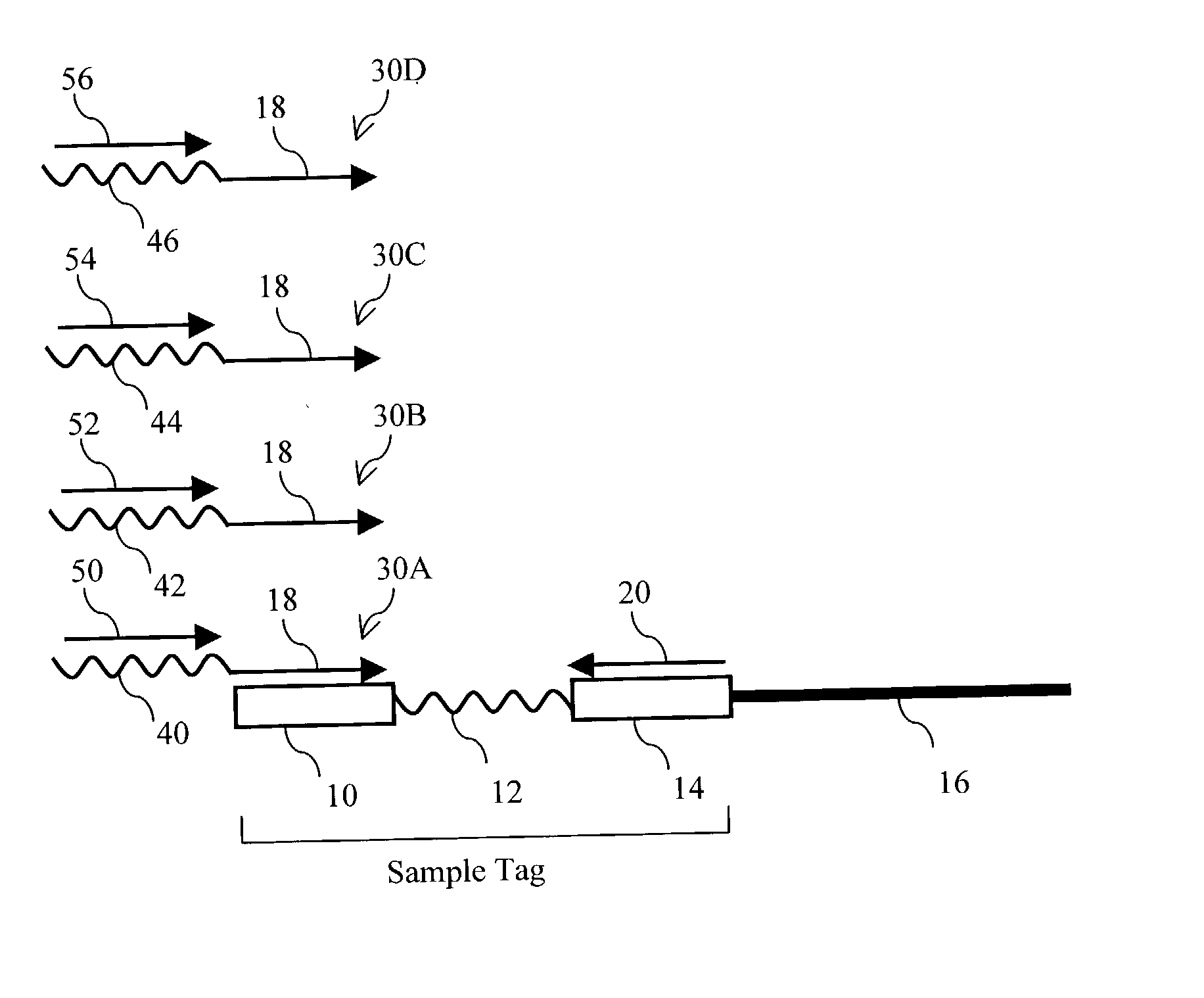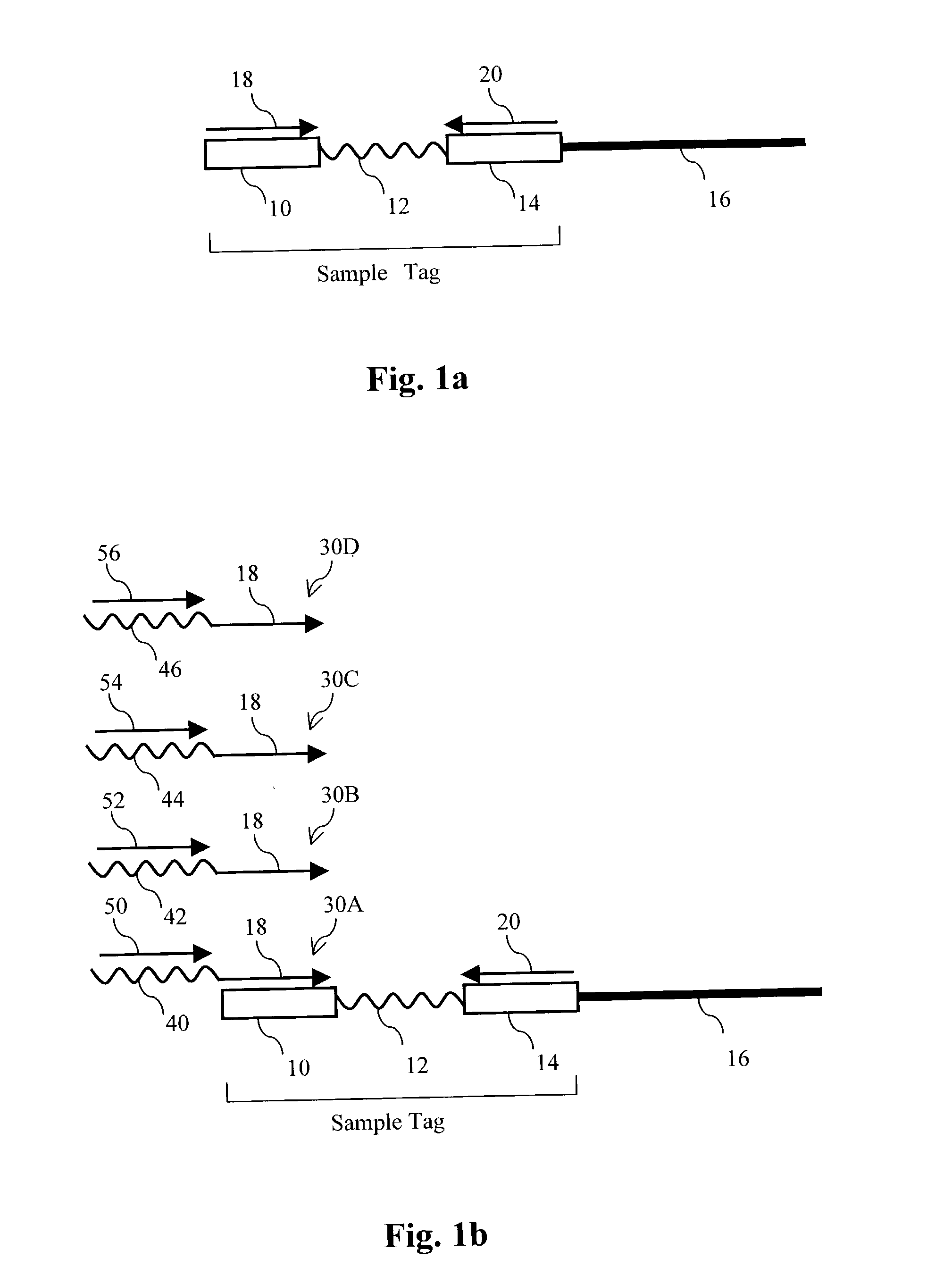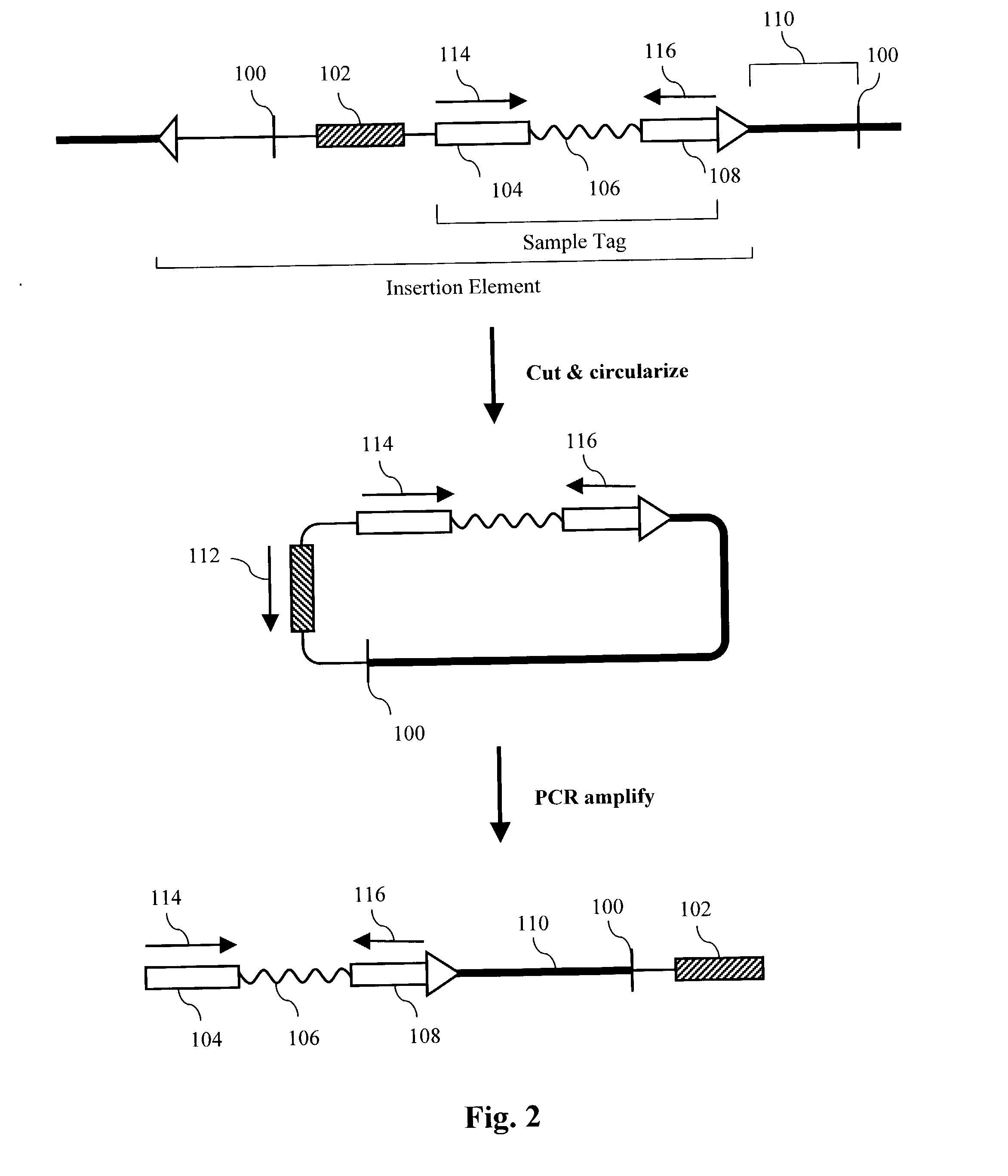Applications of parallel genomic analysis
- Summary
- Abstract
- Description
- Claims
- Application Information
AI Technical Summary
Problems solved by technology
Method used
Image
Examples
example 1
7.1 Example 1
[0314] In this example, sequence information was obtained for a subset of cloned inserts from a pool of about 110 different cloned inserts. Sample-tagged vectors with inserts were constructed in E. coli using standard techniques. Sample tags were created by ligating complementary pairs of oligonucleotides into the unique Pvu II site of the commercial vector pSP72 (Promega). Eleven different tags are shown below:
1 Tag1 CAGCACCAGGAAGGTGGCCAGGTTGGCAGTGTA (SEQ ID NO:1) Tag2 CCTAGCTCTCTTGAAGTCATCGGCCAGGGTGGA (SEQ ID NO:2) Tag3 ATCAAGCTTATGGATCCCGTCGACCT (SEQ ID NO:3) Tag4 GGTGCTCGTGTCTTTATCGTCCCTACGTCTCTT (SEQ ID NO:4) Tag5 AATTTTGAAGTTAGCTTTGATTCCATTC (SEQ ID NO:5) Tag6 GGCGTCCTGCTGCAGTCTGGCATTGGGGAA (SEQ ID NO:6) Tag7 ATTGAAGATGGAGGCGTTCAACTAGCA (SEQ ID NO:7) Tag8 GATGAACTATACAAGCTTATGTCCAGACTTCCA (SEQ ID NO:8) Tag9 AAGGGCAGATTGGTAGGACAGGTAATG (SEQ ID NO:9) Tag10 CCGTCGGOCATCCGCGCCTTGAG (SEQ ID NO:10) Tag11 TACATTGTGTGAGTTGAAGTTGTATTCCAATTT (SEQ ID NO:11)
[0315] Inserts wer...
example 2
6.2 Example 2
[0326] This example describes a strategy for simultaneously sequencing about 37,000 different templates. A collection of about 100,000 sequence-tagged vectors is constructed from the commercially available bacteriophage vector M13 mp18. Using standard methods, the vector M13PL1 is constructed by modifying M13 mp18 between the EcoR I and Hind III sites as shown:
3 BstXI BstXI BamHI GAATTCCATGTTGTTGGGGCGCGCCTCCATCAACGTGGATCCATCGAGACGGTCCA TagL>>>> EcoICR1 PstI HindIII GAGCTCAGTGGCGCATGCAATGCTCCAACTGCAGGTTAGCCATGGTTGCCCAAGCTT <<<TagR
[0327] (SEQ ID NO:17)
[0328] A pool of 100,000 different oligonucleotides is synthesized 3'->5' on an ABI model 394 DNA synthesizer by the "split and pool" approach described by Brenner (1997b). The sequence "TGCA" is synthesized on 10 columns. A different 5 base sequence is added to each of the 10 columns. The column packing material is removed from each column, mixed together and repacked into the 10 columns. A different 5 base sequence is synt...
example 3
7.3 Example 3
[0342] This example describes a method for simultaneously generating about 37,000 restriction maps.
[0343] A pool of about 100,000 sample-tagged fosmid vectors is prepared by PCR amplifying the sample tags from the pool of phage vectors in Example 2 and cloning the collection into the fosmid vector pFOS1 (Kim, U. J. et al, Nucl. Acids Res. 20:1083-85 (1992)). DNA from the phage pool is amplified with two primers, TagR and CAACGTGGATCCATCGAGA (SEQ ID NO:32), in a PCR reaction using Pfu polymerase (Stratagene) according to the manufacturer's instructions. The resulting amplicons comprise TagR, the variable sequences and TagL plus the BamH I site shown above. The amplicons are cut with BamH I and pFOS1 is cut with BamH I and Srf I. The vector and sample tags are joined by ligation and transformed into the bacterial strain pop2136 (Kim et al., 1992) by electroporation. Note both restriction sites are restored in the vector after ligation to the sample tags. About 10 million ...
PUM
| Property | Measurement | Unit |
|---|---|---|
| Biological properties | aaaaa | aaaaa |
| Level | aaaaa | aaaaa |
Abstract
Description
Claims
Application Information
 Login to View More
Login to View More - R&D
- Intellectual Property
- Life Sciences
- Materials
- Tech Scout
- Unparalleled Data Quality
- Higher Quality Content
- 60% Fewer Hallucinations
Browse by: Latest US Patents, China's latest patents, Technical Efficacy Thesaurus, Application Domain, Technology Topic, Popular Technical Reports.
© 2025 PatSnap. All rights reserved.Legal|Privacy policy|Modern Slavery Act Transparency Statement|Sitemap|About US| Contact US: help@patsnap.com



